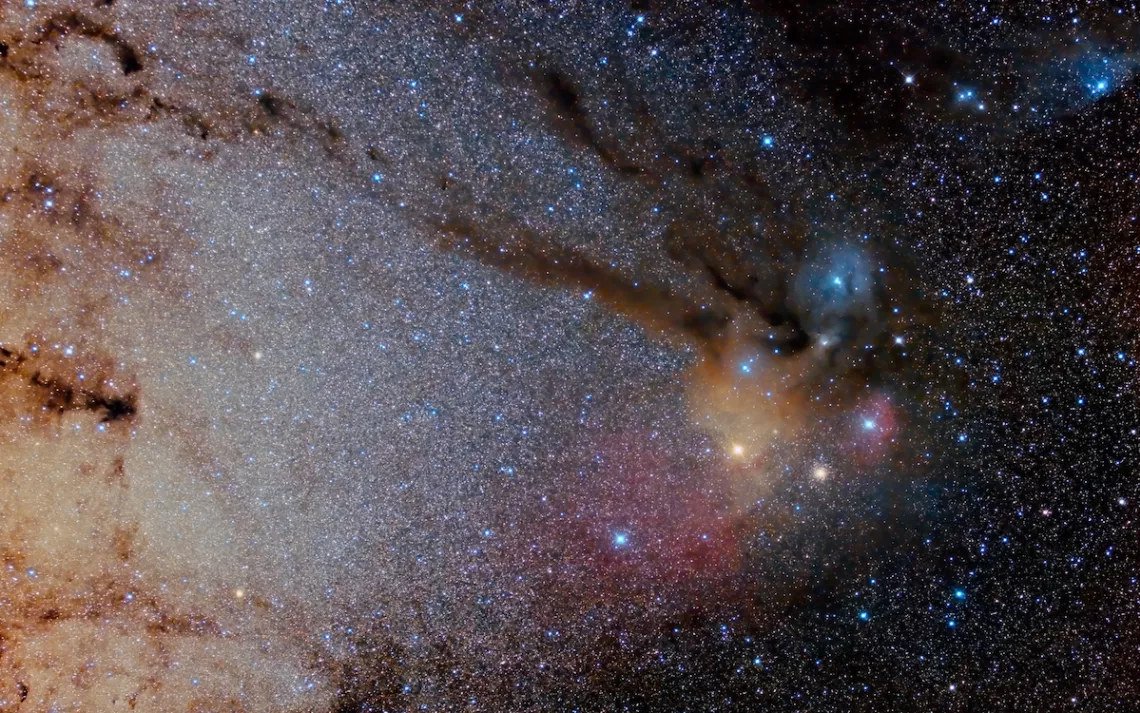June Astronomical Highlights: Serpent Bearer and Strawberry Moon
Summer is a great time to seek out some true darkness

Photo by peresanz/iStock
The constellation to be on the lookout for this month is Ophiuchus. Also known as the Serpent Bearer, it should really be considered one of the constellations of the zodiac, because it lies along the same line (the ecliptic) as the traditional zodiacal constellations, and the sun, moon, and planets all pass through it. The snake handler lies between Sagittarius and Scorpius—to find it, look low in the southeast but above the coiling scorpion with its two claws.
Jupiter spends all of June (and July and August) within the borders of Ophiuchus. On June 10, Jupiter reaches opposition, when it is opposite the sun in our sky. The red giant will rise at sunset, set at sunrise, and be available for viewing all night long.
The moon is in the vicinity of Jupiter on June 15 and 16. The strawberry moon (a nickname for the full moon in June) will be 100 percent lit on June 17 at 1:30 A.M. PDT while still within the borders of Ophiuchus.
Ophiuchus also hosts Rho Ophiuchi, one of the most colorful and beautiful collection of stars in the heavens. This magnitude-4.9 object is found by looking above the reddish star Antares, a neighbor just across the border in Scorpius. A multiple-star system enveloped in gas and dust, Rho Ophiuchi is a stellar nursery that glows in shades of blue, red, and yellow.
With the warm weather and long days, summer is a great time to travel somewhere truly dark in order to observe Ophiuchus or other night sky targets. The most coveted locations have been named International Dark Sky Sanctuaries. Only nine of them exist in the world, but four of them are located in the United States: Cosmic Campground in western New Mexico’s Gila National Forest; Devils River State Natural Area north of Del Rio, Texas; Massacre Rim in the northwest corner of Nevada; and Rainbow Bridge National Monument in southern Utah.
If you can’t make your way to one of these sanctuaries, try heading to an International Dark Sky Park.
You may already have been to one and not known it. A number of the national parks out west are dark-sky parks, such as Big Bend, Joshua Tree, Grand Canyon, Canyonlands, and Death Valley.
Standing under truly dark skies far away from light pollution can render the cosmos completely unfamiliar to viewers. So many stars are visible that it can be hard to pick out normal guideposts, such as the Big Dipper or Orion. Observers have looked up at light-pollution-free skies and grumbled about clouds blocking stars, only to realize that they’re looking at the dusty clouds of the Milky Way. Venus can shine so brightly in dark-sky locations that you can see shadows cast by its light. Rare opportunities exist in dark sites to see interplanetary dust left over from the creation of the solar system. The zodiacal light and gegenschein are, respectively, a pyramidal glow rising from the horizon and a spherical patch of backscattered light opposite the sun created by 4.6-billion-year-old dust still drifting along the ecliptic plane of our solar system.
So when summer arrives with the solstice on June 21 at 8:54 A.M. PDT, make the most of those short summer nights by seeking out the darkest skies you can find.
 The Magazine of The Sierra Club
The Magazine of The Sierra Club







